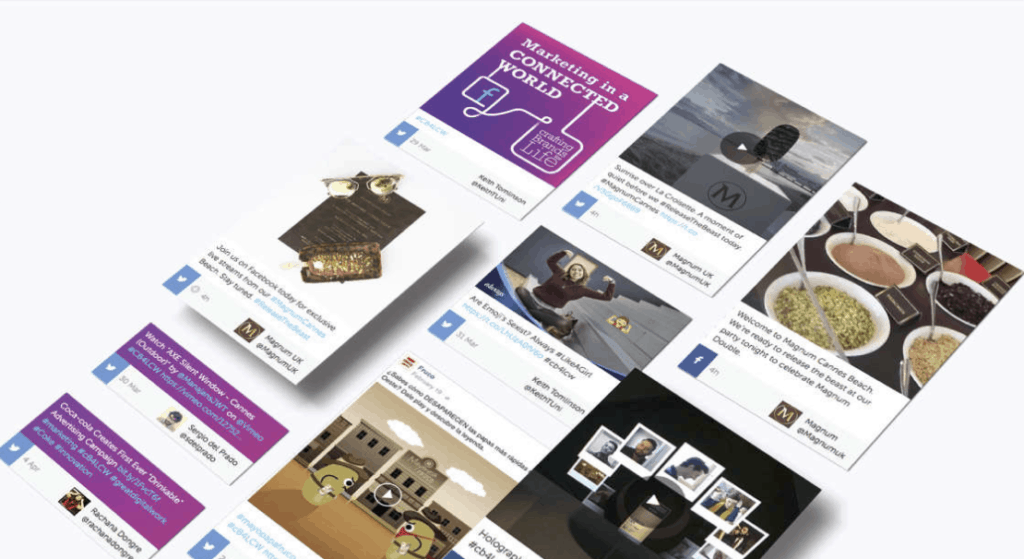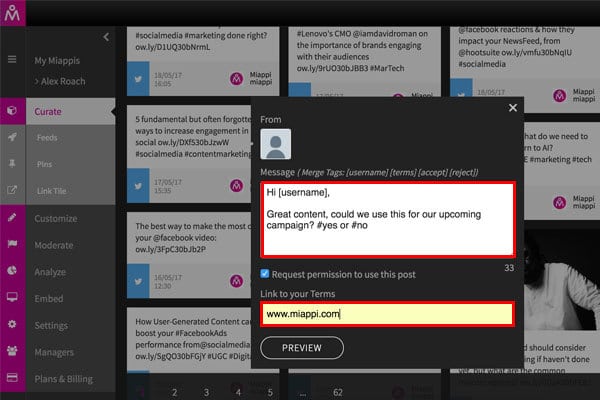How to Overcome User Generated Content Disadvantages?

User-generated content is considered to be something of a Holy Grail by many brands keen to engage and grow digitally. Digital marketers and digitally minded brands alike will go to great lengths to prompt users to deliver some of that sweet, sweet positive UGC.
From running competitions, to masterminding engaging campaigns, today whole swathes of marketing budgets and working hours go towards spawning content from social media users. The pros of getting UGC are numerous. But be aware, one false step and all your efforts may be lost.
Here we present 3 dangers and disadvantages of user generated content and how to overcome them.
3 Tips to Overcome Disadvantages of User Generated Content
It can be an ill-thought out UGC-minded social media campaign. It could also be an image published on site without the user’s permission. There are really lots of ways in which UGC can betray brands. In some cases UGC problems will result in wasted budget and perhaps some negative publicity on social media. In others it could mean very nasty interactions with users, fines and even legal action.
Keep best practice in mind and UGC can be harnessed to generate a hugely positive effect for your brand. Fail to do things “the right way” and you could find yourself in hot water. Keep these three “hard truths” about user generated content in mind to stay safe a reap positive returns…
-
User generated content is hard to control
Think of all the hard work brands pour into UGC campaigns. In terms of budget and working hours, the most successful UGC campaigns can be extremely cost intensive. You need to mastermind hashtag campaigns, plan competitions, and invest in influencer marketing.For most brands this investment is worthwhile. Especially as long as the campaign generates lots of positive collateral they can use to market their service or product. Yet, the truth is that even if users are generating fantastic content, this content doesn’t belong to the brand itself.
In one way, brands are effectively marketing for the social networks of their choice. They’re actively making platforms like Twitter and Instagram more vibrant and engaging. They’re prompting their users to be more active. Ultimately, brands have nothing concrete to show for all of this activity and investment.
The platform that the content is posted on and the user in question own the content. It is highly temporary and the user can delete in an instant, making it a very fragile asset indeed. It is only visible for a short period of time. The brand responsible has little or no control over the UGC it has worked to hard to trigger. If it tries to take ownership of the content, it can find itself in hot water.UGC does not belong to brand, it belongs to Social Networks!
Tip 1: Take Control of the UGC with Miappi
Our social media aggregator allows brands to take control of the UGC they create. We help brands to keep track of valuable UGC. We help them to identify the most powerful pieces. Finally, we allow them to make this valuable content visible on public social walls, without stepping on any toes.
We use machine learning to identify which social content carries the most potential value for your brand. We do that by using tools including ImageScan, a text rules engine and artificial intelligence. Our goal is to pinpoint positive UGC which deserves a more permanent showing on your social wall.
Our attractive social walls then combine this content on your website or any possible digital touchpoint. We want to have ROI generating, conversion triggering and engagement boosting UGC front and centre over the long term. And most importantly all of them being in one visible, brand-owned place.
-
Explicit usage consent is difficult to obtain
No brand wants to find itself in hot water when a user objects to them republishing their UGC. It’s reasonably safe to assume users uploading UGC featuring a campaign hashtag are comfortable with you using their creation. However, it’s not a dead cert.For many brands, only direct permission will do, especially when they want to use more “organic” UGC. UGC which doesn’t include a brand hashtag or hasn’t been created as part of a UGC campaign. Images, especially, can be sensitive material to republish, especially when shown on a brand’s website.
This type of activity has already cost brands like Duane Reade dearly. When the chain published a “papped” image showing Katherine Heigl holding two of their bags, the Grey’s Anatomy actress successfully sued the US drugstore for $6m.
Users become increasingly aware of the value of UGC to brands. It’s likely they’ll be less and less willing to give “something for nothing”. Brands first ensuring consent before utilising UGC is therefore more important than ever. It makes harnessing this type of content even more time- and resource-consuming
Tip 2: Quick and Easy Way to Obtain UGC with Miappi
Miappi Engage makes obtaining user content regarding UGC quick and easy. When you come across a piece of UGC relating to your brand which you want to showcase on your social wall on site or on any screen, the paper aeroplane “Engage” button on the top right of the post (as viewed in the Curate tab) allows you to instantly reach out to the creator of the post, asking them to deny or approve sharing with a simple #yes or #no.
Customize your message before sending, or send a friendly template to content creators. Then wait for the “Engage” button to turn orange. This means that Miappi is sending the message. If it turns blue then Miappi has sent the message. Green means that the user has approved your request but red that the user has denied your request.
-
Sharring the content without permission
Want to share a great image of a consumer enjoying your product or service? Proceed with caution. Visual UGC is especially sensitive when it’s time to share. Not only will you need consent from the individuals in the image. You’ll also need to consent of whoever took the photograph. In the Wild West of the web, this isn’t always easy to discern. That means it’s especially important that you interact with the individual who has shared the image. You need to make absolutely certain that they’re the original photographer. Sharing another photographer’s image without their consent could get you in big trouble.
Tip 3: Verify Owners and Engage with them using Miappi
Again, Miappi Engage is here to save the day. Customizing your “Engage” outreach message allows you to ensure the sharer is also the photographer. Of course, it’s not always possible to rely on reported ownership of an image. So pop any photo you intend to use (with permission) into a Google Image search. That will help to verify that the individual you are interacting with is indeed to owner of the image.Make the valuable visible. REQUEST A DEMO today to showcase amazing content which presents your brand at its best.





